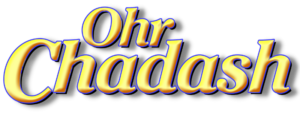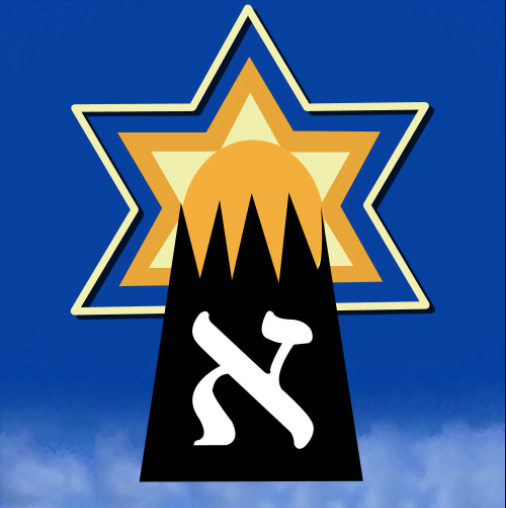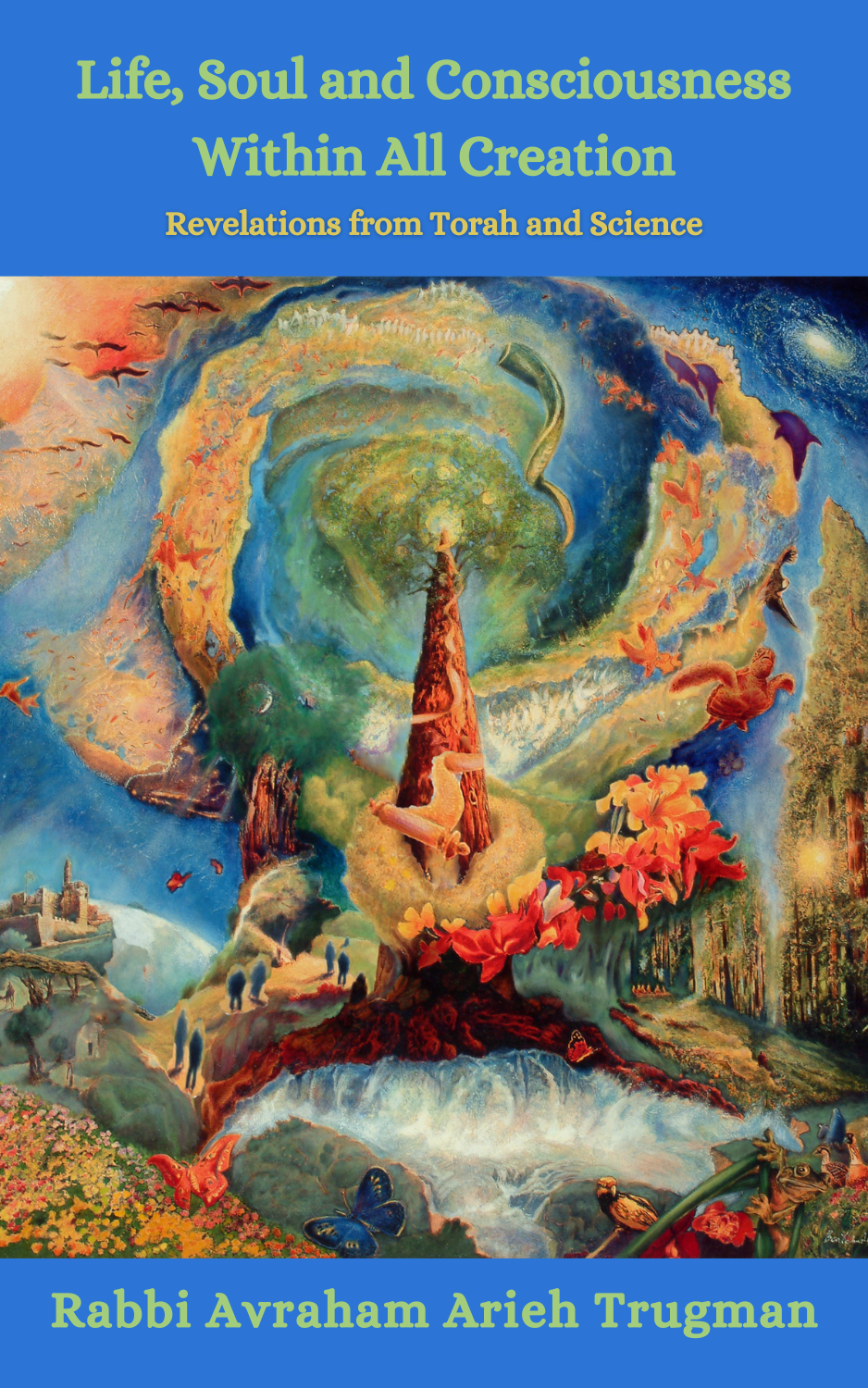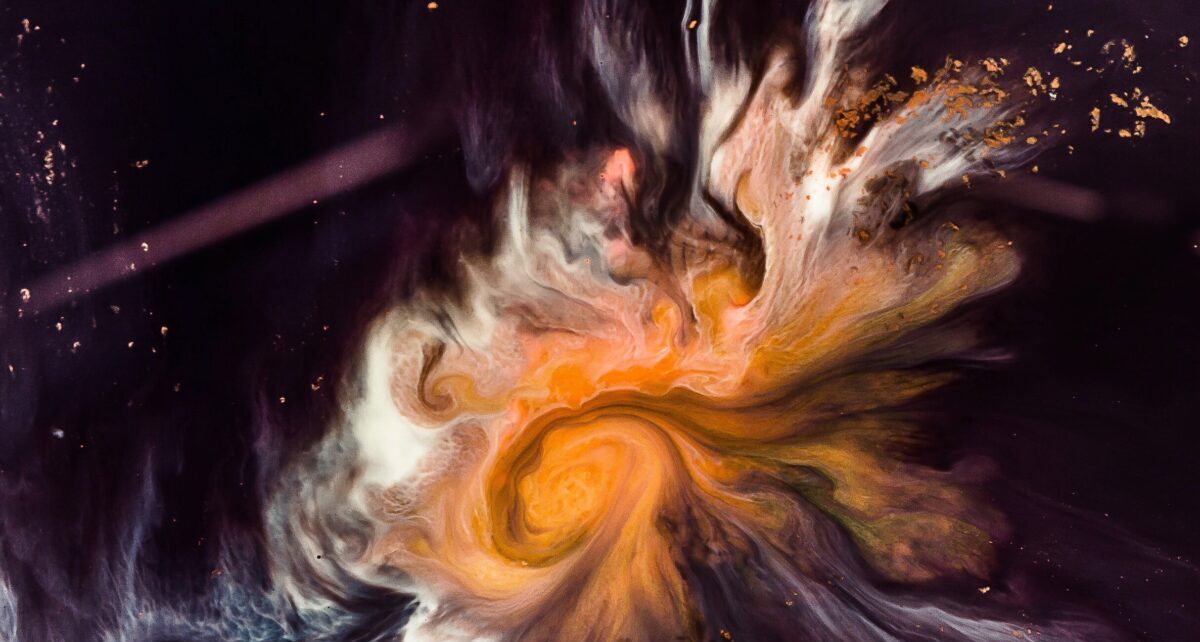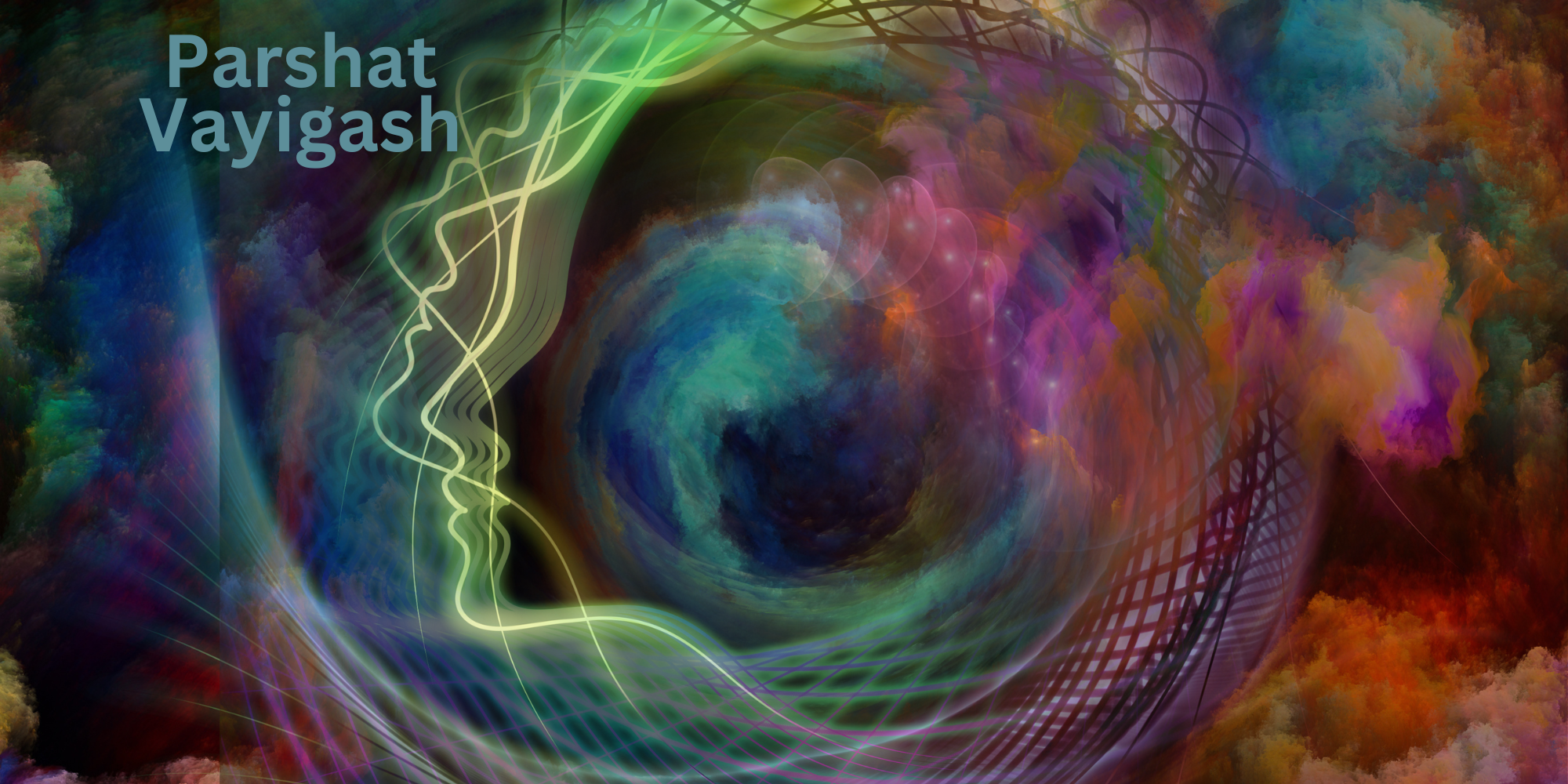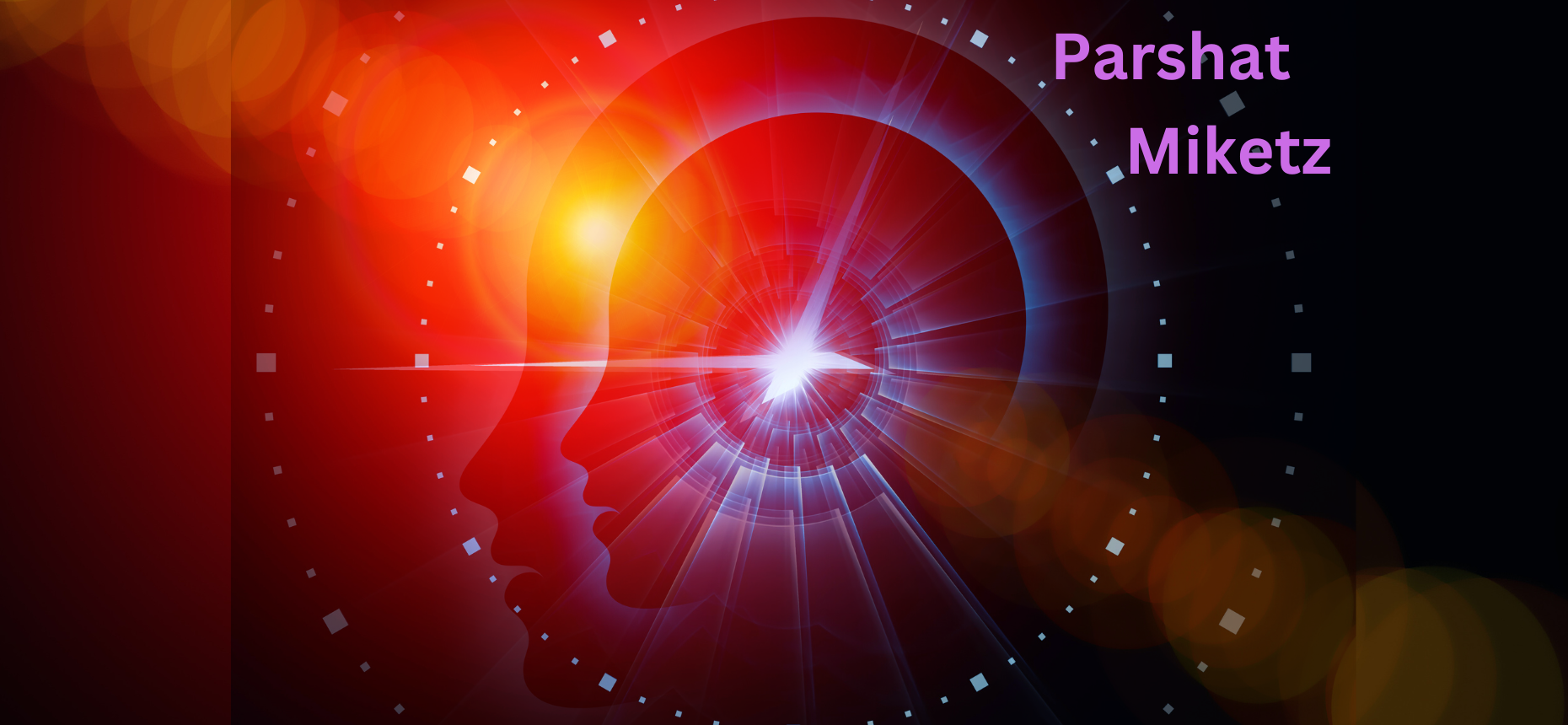The Torah’s final verse read as follows: “And by all the strong hand and awesome power that Moses performed before the eyes of all Israel” (Deuteronomy 34:12). As we have demonstrated throughout this book, Rashi and the other commentators often seek deeper meanings in the juxtaposition between two portions as well as in the juxtaposition of two incidents within a single portion. With this in mind, many Chassidic commentators take the Torah’s last verse and connect it to the Torah’s first verse – “In the beginning (bereishit) God created the heavens and the earth” – and read them as one long sentence: “Before the eyes of all Israel in the beginning God created the heavens and the earth.” As we noted above, Rashi translates the letter beit, the “be-” in “bereishit” (“in the beginning”), as “for the sake of,” instead of adopting the more usual translation of the beit as “in” (“in the beginning”). This allows him to explain that God created the world “for the sake of the Torah that is called the first of His ways and for the sake of Israel that is called the first of His produce.” This interpretation fits nicely with the reading of the end and the beginning of the Torah as one long sentence: “Before the eyes of all Israel [and for the sake of the Torah and Israel] in the beginning God created the heavens and the earth.”
According to the Midrash, when God created the world He took counsel with the souls of the tzaddikim. Since the Midrash is referring to an epoch before time and space, when God’s oneness was the only entity in existence, we must ask what precisely the Midrash means by “the souls of the righteous.” The mystical response to this question is that the souls in question were the future souls of Jewish tzaddikim; however, at this point, the souls were completely unified within God’s very essence. Thus, God was, in some sense, conducting an internal dialogue.
This Midrash also sheds light on the reason for standing during the Friday night Kiddush. Tradition dictates that we stand during Kiddush to indicate that we are like witnesses attesting to God’s creation of the heavens and the earth. And, indeed, the Jewish people are called upon to bear witness to God’s unity and His role as creator of the world to the entire population of the planet. (In the Shema, the cardinal statement of Jewish belief in the oneness of God, two letters are written unusually large – the ayin in the word “Shema” and the dalet in the word “echad.” Together, these two letters spell the word ed [witness].) However, how can the Jewish people be tasked with this role if Jewish law firmly declares that a witness must have seen the event he or she is testifying to! Therefore by standing during Kiddush on Shabbat it is as if we are saying: “before the eyes of all Israel in the beginning God created heaven and earth.” We may in fact stand and give testimony, for in some deep, almost unfathomable way our souls witnessed creation, for the people of Israel are part of God’s very essence, the souls of the tzaddikim that God consulted.
Another connection between the Torah’s beginning and ending is derived from Rashi’s revelation of what exactly Moses performed “in the eyes of all Israel.” Quoting the Sifrei, Rashi very cryptically comments that the verse is referring to the breaking of the two tablets of the law, an act which God Himself not only agreed to but actually applauded. Had Rashi not made this comment, we certainly would have assumed that the verse was referring to one of the many miracles Moses performed for the people during the exodus from Egypt and the crossing of the Reed Sea. We certainly would not have thought of the tragic incident of the Golden Calf that led to the breaking of the tablets. What deeper matter is Rashi alluding to?
According to the Arizal, before God brought the current World of Rectification into being a cataclysmic “breaking of the vessels” occurred in the World of Tohu (World of Chaos). The World of Rectification could only come into being after this cataclysmic event. The breaking of the tablets, mentioned by Rashi, seems to allude on a mystical sod level to “the breaking of the vessels,” which thus brings us full circle by linking the end of the Torah to the creation of the world, as per our reading of the verse: “Before the eyes of all Israel in the beginning God created the heavens and the earth.” In a certain sense, Moses’ breaking of the tablets was an archetypal and painful reenactment of “the breaking of the vessels,” which paradoxically allowed for the process of rectification, already begun by the patriarchs and matriarchs, to continue. The tablets fashioned for the Jewish people – just like the “vessels” in the previous World of Tohu which broke – were also unable to hold the holy light that God placed in the first tablets.
The Torah’s last letter is a lamed, while its first letter is a beit. Together, they spell the word “lev” (heart). Rabbi Yochanan Ben Zakkai once asked his students what attitude towards life a person should adopt. Of all the approaches suggested, he preferred “a good heart,” as he felt that this approach encompassed all the others as well (Pirkei Avot 2:13). On Simchat Torah, we hint at this truth, because as soon as we finish reading Vezot Haberachah we immediately roll the Torah scroll back to Bereishit and start over again. Thus, we link the lamed and the beit and begin a new cycle with a “good heart,” hopefully purified by the prayers of Rosh Hashanah, Yom Kippur, and Sukkot.
Chassidut teaches us that “there is no vessel as whole as a broken heart” (Degel Machaneh Efrayim, Parashat Va’etchanan). Usually, before true repentance and real personal change can occur, we must “break our hearts,” undergoing a crisis of identity and purpose. Indeed, Moses was attempting to break the hearts of the people of Israel when he broke the tablets. He needed to do something so shocking and dramatic that even those dancing around the Golden Calf would be shocked into a state of regret and repentance. God Himself applauds Moses’ spontaneous action as it succeeded in bringing the people back to their senses and created the circumstances where reconciliation between God and Israel could be facilitated. As light appears to be stronger when dispelling a previous state of darkness, this world is preceded by the breaking of the vessels, which paradoxically paves the way for true and lasting rectification. A beautiful remez to this concept is found in the Torah’s last three words le’einei kol Yisrael (“before the eyes of all Israel”), whose first letters spell the Hebrew word “kli” (vessel).
The Midrash teaches that God created teshuvah even before creation itself. This too is hinted at by the connection between the end and the beginning of the Torah. As we reach the end, we hasten to return to the beginning again to further rectify creation and our own lives by taking with us all the broken moments of genuine teshuvah experienced over the High Holiday season. From these broken moments we fashion our own “world of rectification.” For if there was no teshuvah there could be no rectification, which is the underlying purpose and fabric of this world.
Rabbi Shlomo Carlebach frequently used the image of the broken tablets, noting that they were housed in the ark in the Holy of Holies next to the second set of whole tablets. One might have assumed that once the tablets were broken and their letters ascended back to their heavenly source, there would be no need for the broken tablets, especially as they were a reminder of the colossal failure of the people of Israel. Yet these broken tablets were reverently kept in the holiest place in the Tabernacle! This, Rabbi Carlebach points out, represents the power of a broken heart transformed by teshuvah: it reaches the profoundest, innermost place – the Holies of Holies. The “breaking of the vessels” is a theme that manifests itself on all levels of reality, from the end of the Torah to its primordial beginning, from Adam to all humanity, and from the individual Jew to the nation of Israel.
